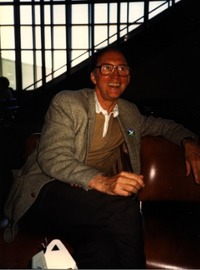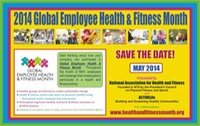During my graduate training back in the Sixties, one of my professors in exercise physiology was fond of saying, “Remember, there is no medicine or drug ever developed that is capable of such incredible biochemical and neuromuscular health contributions than appropriate daily exercise.”
He would pause for effect. Then, shaking his head slowly, continue.
“Science is on our side, but science alone is insufficient. We must learn more about human behavior and habits!” His finger would punch the air for effect. “Helping the fit become more so, is simple. But we must dig deeper and explore related fields to unlock the mystery of high-risk behaviors and habitually inactivity.”
Little did I know, that eventually my own recovery journey would open a whole new paradigm and language to help me understand my moderate and high-risk clients, as well as myself. It led me to explore areas outside traditional health-promotion studies and examine such subjects as social control, criminology, group dynamics, family systems theory and, of course, 12-step programs and the recovery movement in general.

Dr. Robert Allen introduced us to the dynamics of compulsive/addictive systems.
In the Seventies and Eighties, the late, great Dr. Robert Allen came into the health promotion and fitness profession from the allied fields of psychology and criminology. He explained to audiences why he switched professions in mid-career: He was weary of the constant recidivism and hopelessness among the criminally inclined. Health promotion and fitness appeared a more productive way to spend the remainder of his career.
However, it wasn’t long until he discovered familiar patterns of self-abuse, deceit and shame among his moderate- and high-health-risk clients. Allen widened our horizons to understand that much of the chronic disease we were fighting was actually a symptom. Not unlike my graduate professor of 30 years earlier, Allen urged us to consider other areas of study—particularly social/psychological and criminology.
Dr. Allen introduced many of us to the dynamics of compulsive/addictive systems, and how many health professionals, with good intentions, enable moderate and high-risk clients by keeping them stuck in cycles of self-neglect, personal abuse and denial. He talked about compulsive overeating not as a nutrition and calorie control issue, but as a compulsion and mood-altering behavior.
For food addicts and the habitual and deliberate inactive, their good intentions and resolutions are often overwhelmed by distress patterns buried in the mystery of their family origin. Until exposed, these patterns are often impervious to rehabilitation, drugs or even surgical intervention.
Executives Reduced To Shame
I have coached and counseled otherwise powerful people who became weaklings at the dinner table or, more likely, later when alone. They include doctors, lawyers and successful business executives who have been reduced to shame and despair after a food binge or prolonged fat gain. They could perform like tigers when their personal trainer barked instructions, but turned into pussycats when alone, in distress and close to their binge foods.
Everyone knows about the obesity crisis in the U.S., but not everybody associates it with family systems theory and compulsive/obsessive food addiction. Instead, our public health officials rely on outdated public relations programs, slogans, appeals from public figures and urgent messages from elite athletes.
For me, the concept of Renew, and the literal meaning of the word, suggests the need to overhaul old and increasingly ineffective university public health and fitness-training programs.
In every community in America, there are healers and teachers who, because of a lifetime of pain and suffering, submitted to 12 simple steps. And by the grace of God and the support of volunteer sponsors who gave back what they were given, they found the power of choice to live healthy, productive, and meaningful lives, one day at a time. It’s time we tapped into that strength.
This blog was first published on RenewEveryDay.com.
